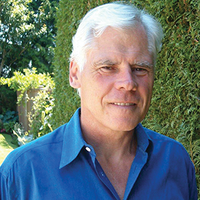
By / Steve Clayman
It’s competitive out there. Very competitive. There doesn’t seem to be any reprieve. The pressure is constant. It doesn’t matter what sector you participate in. For manufacturers, it’s a relentless drive for greater production efficiencies and cost reductions everywhere else. The overriding approach by management is that it’s demeaning for plant workers to spend an entire shift, all week, all month, all year, manually lifting bags of residential insulation off of a conveyor belt. Mind-numbing. The answer? Replace workers with machines. Machines don’t get sick, want more money, or take breaks.
A number of years ago, an insulation manufacturer decided sales reps could be replaced with an 800 number. That didn’t last very long. Today, almost everything is online. Who calls on mechanical engineers any more? Which reps are now responsible for huge territories? Do more with less.
I visited a drywall plant about 25 years ago. The only people on the floor were the occasional maintenance workers. Six technicians on shift and in a booth oversaw the entire plant. Everything, but everything, was automated. This was in place over two decades ago. Today, the level of automation is even greater.
Is there still someone who hasn’t bought an item from Amazon? Hit that magic button and an incredible series of unseen events takes place. These events continue until the item is finally delivered at its destination. Automation plays a significant role in this process. In fact, the efficiencies are so prevalent, often the workers in the distribution centres can’t maintain the pace. The answer? More automation. Fewer workers.
For distributors, staying competitive is critical, but where do efficiencies come from? Longer warehouse hours? Relationships? Pricing support from suppliers? Faster, better, smarter product delivery initiatives? Break out into new markets? How is all that ultimately sustainable?
Contractors are at the mercy of almost everyone up the food chain. How can a contractor be efficient when a delivery is late or the wrong material is shipped? What about being fully prepared to begin work in an area of a project, only to be told with no advance warning, the start point has moved? How is our industry supposed to address the shortage of skilled installers?
Former United States President Barack Obama was in Toronto January 23, 2020. He came to give a talk to a sold-out house. The topic was “Future Skills”. During the course of his presentation, he emphasized that if today your work consists of repetitive work, then your value to the company will become obsolete. You will be replaced by automation, by a machine. It sounds scary, but it is going on all the time and in every office and industry. The banks are a perfect example of this trend.
Developers and contractors look for efficiencies because efficiencies reduce costs and speed up the completion of a project. If you compare products and procedures from a few years ago, the changes are evident. Europe is decades ahead in building technology, particularly when it comes to pre-fabrication of components. Going back to the drywall plant I visited, I saw a drywall installation where the vertical edges of the sheets were very precisely tapered to meet a matching panel. The requirement for tape was eliminated. Prefabricated walls with studs, drywall, and electrical and plumbing connections were used. Bathrooms were prefabricated to the point where they only had to be put in place, connected to water and electrical lines, and were operational. Hollow core structural concrete slabs were installed. Conduit was run through some cores and other cores served as ducting. They weren’t using sheet metal ducts for most air delivery requirements. Where does all of this fit in with mechanical insulation?
Incorporating a higher degree of prefabrication is what the construction industry is looking for. Several products have been around for a long time—insulated ducting and pre-insulated piping. The reasons these concepts haven’t gone mainstream remain as challenges for those industries. A few of the challenges facing these industries are code restrictions, lack of experienced installers, and tradition. Are these manufacturers working to overcome acceptance issues? Consider this:
The AHR Expo (www.ahrexpo.com), promoted as “The World’s Largest HVACR Marketplace,” took place in Orlando February 3-5, 2020 and showcased thousands of products from dozens of countries. Attendance was north of 45,000. There were at least four manufacturers of pre-insulating piping and a few displaying insulated duct. The AHR Expo trade show is mind-boggling expensive. Why would these companies make the investment unless their respective owners saw a potential return?
It pays not to ignore trends, the thought processes people have about “What’s next?”, and where other industries have ended up. Learn what industries exist today that didn’t exist five and ten years ago, and then project forward. Where is the industry you’re part of today going to be five and ten years hence?
I can’t predict what the future brings. Certainly, there will always be a requirement for skillsets whereby someone actually has to physically do something. Who would have ever thought that a robot would have a greater degree of dexterity and accuracy than an experienced neurosurgeon? Who is up for brain surgery by a robot? Are you kidding me? This relentless push for greater and greater efficiencies incorporating artificial intelligence moves forward.
This article poses numerous questions, which for the time being remain unanswered. Make no mistake, there are people thinking and acting on “next steps”. The mechanical insulation industry has remained quite static for about 100 years. Is it due for changes that are measured or radical? Just asking. ▪



